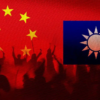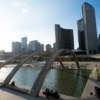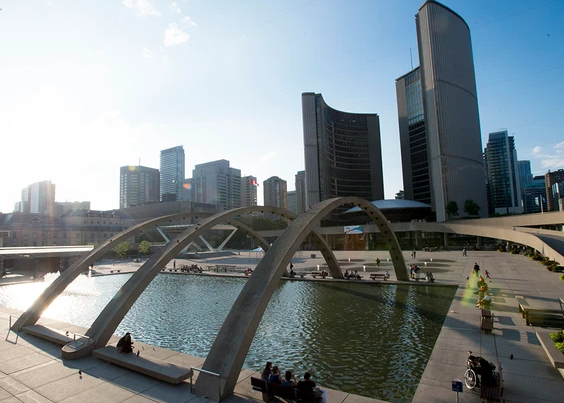Over the last 200 years, Libya has again and again altered the West’s political and economic trajectory. America’s war with the Barbary pirates in the early 1800s led to the re-creation of the U.S. Navy. Muammar al-Qaddafi’s price-squeezing of independent U.S. oil companies in the early 1970s helped give rise to OPEC. And Qaddafi’s failure in the 2000’s to let go his grip on power helped spawn the demons of the Arab spring.
Yet despite Libya’s strong influences on the course of Western history, it seems none of this has made a lasting impression on Western political consciousness. Let’s hope that policymakers start learning from history before a vicious jihadism that is finding a new home on Libya’s Mediterranean shores makes itself felt on the home front and, once again, Libya changes the course of world events.
Ethan Chorin, “The New Pirates of Libya,” Foreign Policy, March 3 , 2015.
In the short five years after a popular revolution consumed the government of Muammar Qaddafi, the aspirations of the Libyan people for a bright future has collapsed in disarray. In contrast, the internal security situation in Libya is both highly polarized and volatile. In the wake of the demise of Qaddafi a period of prolonged instability rife with religious, political, tribal interplay has brought about a “vacuum of authority.”[1] This brought about an ideal storm enabling extremist elements, as well as criminal gangs to entrench themselves and flourish in an unabated fashion.[2] Should this vacuum continue, these terrorist and criminal networks will inevitably expand into the neighbouring states posing a direct threat to the stability of North Africa. To date, the Islamic State (IS),[3] Al Qaeda (AQ) and an estimated 500 to 1,700 groups,[4] are reported to be operating in Libya as terrorists and local militia groups. [5] Understandably such armed elements pose a direct internal threat to any future internationally recognized Libyan government, and concomitantly, the broader regional and international peace and security environment, particularly that in Europe. [6]
Background – The Beginning of the End
In late 2010, a period of political unrest (known later as the Arab Spring) began that soon embraced several North African and Middle Eastern countries. Once the Arab uprisings manifested themselves in Tunisia they quickly expanded to Egypt, it was inevitable that Libya would follow. On February 15, 2011, the revolution began in Benghazi, Libya’s second-largest city and a focal point of opposition to Qaddafi’s 42-year-old regime. Many Libyans were alienated by the Qaddafi regime because of the pervasive patronage, government corruption and large-scale youth unemployment. By February 17, 2011, the Libyan revolution had spread rapidly from Benghazi to other cities.
In the hope of quashing this revolt and maintaining political control, Qaddafi orchestrated a violent military crackdown ordering his troops to shoot at demonstrators. In Benghazi, his Libyan soldiers turned their weapons on protesters, reportedly killing hundreds and drawing substantial international media attention. In the wake of this incident, a number of the government’s senior politicians voluntarily resigned, while others took the opportunity to defect to the opposition. This tense situation quickly escalated into a civil war, which would result in a February 2012 UN call for sanctions against Libya and a call for the International Criminal Court (ICC)[7] to conduct a thorough investigation regarding the killing of unarmed civilians.
On March 17, 2011, the Security Council declared a no-fly zone[8]to protect the civilian population from aerial bombing and requested assistance to enforce it. A week after the implementation of the no-fly zone, the North Atlantic Treaty Organization (NATO) announced that its members would patrol and enforce it. The international community (NATO) intervened on March 19, 2011 to drive back Qaddafi’s forces that were assigned to regain control in Benghazi. After months of a back-and-forth conflict between government and opposition forces combined with a NATO aerial campaign, Qaddafi’s regime fell on August 22, 2011,[9] when the capital, Tripoli, was liberated. Qaddafi was dragged from a drainage ditch weeks later and summarily executed by rebel elements on October 20, 2011.[10]
The Problem of Two National Government
Qaddafi’s government was initially replaced by a transitional government and, in July 2012, Libya witnessed its first democratic elections, which led to a new transitional parliament in Tripoli called the General National Congress (GNC) also known as the National Salvation Government. Subsequent elections in June 2014 created the House of Representatives (HOR), which was to replace the GNC. It was clear by mid-2014 that the transition timetable set out by the interim constitutional declaration was not achievable. This led to changes in the declaration, allowing for another set of elections to take place for a third transitional period. Unfortunately, the official handover of power never took place, resulting in two competing parliaments operating concurrently, the GNC housed in Tripoli and the HOR in Tobruk.
During the same period, the retired Libyan General Khalifa Haftar attempted a military coup in the hopes of freezing the constitutional declaration and ridding the country of the GNC.[11] This attempted overthrow failed and Haftar focused his efforts in garnering political support in the eastern areas of Libya, with the claimed intent of ridding Benghazi of terrorists. To date Haftar has been unable to fully control the areas neighboring his headquarters.[12] His action, however, spawned two civil wars – one focused in the east and one in the west – both respectively aided by regional players, as well as terrorist groups and local militias, all of whom are intent on garnering influence through their respective support of Libyan opposition groups and their armed militias.
It was estimated that some 25,000 Libyan citizen fighters[13] of different religious, political and tribal persuasions participated during the revolution, however in the aftermath of the liberation, this number is now estimated to be about 250,000.[14] This mushrooming numeric was due to an unfortunate and ill-thought-out policy emplaced by the postwar transition government in Libya. The intent was to pay the salaries of those armed groups who partook in the revolt[15] that were providing security for the government. The unintended consequences of this ill-fated policy was that, “These generous salaries encouraged unemployed Libyan young man to take up arms and set up their own militias or join existing ones. The proliferation of armed militias turned out to be one of the biggest problems after the revolution.”[16]For the West, NATO’s military intervention consisted of limited airstrikes and, with the exception of a few special operations forces,[17] no Western troops set foot on Libyan soil.
Unity Government – Hope for the future?
Since September 2014, the UN and concerned foreign governments have focused on reconciling these two Libyan governments with the intent of forming a national unity government[18] with little success. However, on December 17, 2015, the UN brokered an agreement in Skhirat, Morocco[19] with representatives from Libya’s two respective governments, the GNC and the HOR. They agreed to form a unity government within 40 days. This agreement was hailed as a new beginning for Libya and on January 19, 2016 the Tunis-based newly formed Unity Presidential Counsel (PC), and U.N. Security Council recognized Government of National Accord (GNA), subsequently nominated a 32-member cabinet[20] representing both the GNC and HOR governments[21] was nominated.
Media reports of March 13, 2016, advised that the UN backed Presidential Counsel, based in Tunis, requested that the international community cease dealing with all rival powers within Libya.[22] The PC announced in a statement, that a document signed by a majority of the HOR members backing the new government, as well as the support by the Political Dialogue Team, provided them the green light to begin forming a government. In contrast, Libya’s Political Dialogue Team composed of notable Libyan political figures and some MPs -representing the country’s two rival parliaments – did not appear to support this move that called upon a speedy parliamentary vote on the proposed government. The Tunis-based Presidential Counsel is responsible for organizing a transition of power in order to bring to an end the political chaos and fighting that has permeated Libya since the fall of the Qaddafi regime. Unfortunately, the PC has consistently faced opposition from hard-liners in the internationally recognized HOR based in Tobruk, as well as the rival rebel-backed parliaments in Tripoli.
Challenges Confronting A Future Government
This failure to form a cohesive unity government[23] underscores the difficulties in creating an effective and representative government capable of meeting the spectrum of complex challenges inherent in Libya today. These include instituting law and order, eradicating a flourishing black market and reuniting the country socially, militarily and economically. The latter is particularly critical as reasserting control of the strategically vital oil and gas infrastructure[24] is fundamental to the economic health and future of the country. Concomitantly, the government must defeat the extremist networks which include elements of IS and AQ that have entrenched themselves in Libya and are able to generate monies, train their respective fighters, expand their extremist doctrine and influence, while using Libya as a base to recruit, train, plan and stage their prospective operations.[25] Moreover, IS leadership have broadcast the need to conduct a hijrah (a large scale migration)to Libya underling the need for legal specialists, bureaucrats, doctors, as well as IS fighters, with the aim of entrenching and expanding the caliphate there.[26]
Implications for the West
The continued lack of effective governance, in tandem with the persistent violence and instability that permeates Libya has provided a political vacuum for the IS, AQ, as well as local militias and other extremist elements to fill.[27] This enables them to entrench themselves in a country with an extensive sea border on the Mediterranean and access to Europe,[28] as well porous land borders that enable freedom of movement into neighbouring North African countries. War zones and failed states are highly prized areas in which extremists can operate. Libya represents an ideal geographic safe haven for terrorist and criminal organizations to develop a base that is easily accessible to aspiring jihadists and criminal elements, which facilitates other nefarious activities such as drug, weapons and migrant smuggling, due to its extensive porous borders. Terrorist safe havens represent a threat to local, regional and international security, as demonstrated by the conflicts against violent jihadists of various persuasions during the recent and current engagements of Afghanistan, Somalia, Yemen, Mali, Syria and Iraq.[29]

From a geostrategic perspective, Libya’s location[30] on the Mediterranean and proximity to Europe, its vast territory, the vital importance of its oil and gas reserves, combined with a history of dealing with the threat of violent jihadists, should Libya become a failed state it would have serious repercussions in the region.[31] Tripoli is less than 500 km from Sicily and eastern Libya is only 300 km from Crete,[32] making Libya a veritable ‘stone’s throw’ from Europe — unlike Syria and Iraq. With a long coast line on the Mediterranean, Libya’s location could provide IS a spring-board to interdict commercial sea trade,[33] pose a threat to sea-going tourism and provide a secure base of operations[34] from which to launch terrorist attacks on southern Europe.[35]
Libya’s Mediterranean coastline facilitates large-scale migration from North and sub-Sahara Africa and Middle East into the European Union (EU). This would exacerbate the political situation as EU countries are still trying to grapple with the tsunami of migrants[36] and the threat from infiltrating jihadists using this migrant stream.[37] Interestingly, the situation was forseen by Qaddafi. In March 2011, Qaddafi warned that without a united and stable Libya, thousands of migrants drawn from Africa and the Middle East would flee to Europe. He said, “There are millions of blacks who would come to the Mediterranean to cross to France and Italy, and Libya plays a role in security in the Mediterranean.”[38] He further posited that, “The Mediterranean will become a sea of chaos.”[39] Qaddafi issued a prophetic warning to then British Prime Minister Tony Blair that Islamist militants would undertake attacks in Europe if his regime fell. According to reports, the Libyan dictator contacted Mr. Blair in February of 2011, advising Blair to warn world leaders about the imminent threat of jihadist militants infiltrating Libya. He further warned that these militants could not be reasoned with and intended to control the Mediterranean with the intent of attacking Europe.[40] Unfortunately, his visions of the future appear not to have been taken seriously at the time, yet as we see today they have been realized.
The Blame Game in the West and the Libyan Situation
The Libyan situation has conjured up pointed political rifts between Great Britain and United States. President Barack Obama has subsequently blamed both France and Great Britain for the ensuing chaos that has persistently embraced Libya since Qaddafi’s fall. According to reports, President Obama stated that Prime Minister David Cameron was apparently “distracted by a range of other things,” in the wake of Qaddafi’s ouster to contain the crisis. The president further offered, “It was a mistake to trust America’s European allies to be ‘invested in the follow-up,’ after the 2011 coalition intervention that lead to Gaddafi’s toppling.”[41] Moreover, President Obama argued that as “Nicolas Sarkozy was voted out of office and Mr. Cameron’s attention was directed elsewhere, Europe had largely stood by while civil war took hold and ISIL took root.”[42] Recent events demonstrate that respective European and American governments continue to proffer advice, make plans, yet continue to do nothing decisive to aid the Libyan situation.
A Strategically Advantageous Situation for IS
For the fighters and others who seek religious fulfillment through the IS cause and their evolving caliphate, the lack of Western will to mitigate the situation in Libya is strategically synchronous and opportune for the Islamic State. It is in their interest to ensure that Libya remains politically instable and complex, in order to ward off any Western initiatives to intercede. This Western indecision only aids and abets the Islamic State’s strategic intent, to fully embed their presence and expand their influence by bleeding into Libya’s neighbouring countries, which will only further exacerbate regional instability.
For the IS, Libya represents a vital geostrategic position that provides access to ports, smuggling routes and weapon stores.[43] This latter issue is most salient as Libya is known to be resident to the greatest stockpile of weapons in the Middle East.[44] According to some intelligence experts some 10,000-15,000 man portable air defense systems (MANPAD)[45] were reportedly looted from Libyan government stockpiles, posing a direct threat to all aircraft operating within North Africa and the Middle East, as well as further afield. This precarious situation may see further incidents similar to the reported near destruction of a Thomson charter flight[46] from London carrying 189 passengers. The aircraft allegedly came within 1,000 feet of a missile[47] as the plane was making an approach to Sharm el- Sheikh in early November 2015.
Libya’s Geostrategic Position and the Advantages to Islamic State Strategy
The lack of any semblance of law and order, as well as an extended and porous border provides IS a high degree of operational security, in comparison to besieged core areas in Syria and Iraq. Aspiring jihadists are advised to travel to Libya instead of Iraq or Syria,[48] demonstrating Libya’s unique importance as a secure base for the success of the IS strategy[49] and directly plays into its plans for expansion. This was further buttressed with the appointment by IS’s senior leadership of al Abari as their senior foreign operator to run IS operations in Libya. It was noted that,
Outside of Iraq and Syria, the Islamic State group in Libya is one of the few affiliates with a direct, command-and-control relationship with the core leadership in Raqqa and Mosul. In order to solidify and expand its influence in the country, the group will continue importing foreign fighters and attracting defectors from other extremist Islamist elements within that country. As the group becomes more entrenched, it will also be better able to extort taxes from those under its control, and to exploit the thriving black market economy for its own economic gain.[50]
By exerting its influence through affiliated extremist elements such as Ansar al-Sharia in Libya (ASL) and the broader GNC alliance, AQ’s strategy is to integrate with and employ its proxies to sublimate its presence to the outside world. AQ intends to ensure its influence in any future Libyan government via its relationships with GNC and Libya Dawn[51] through the auspices of the ASL.
Moreover, the border areas along the west with Algeria and Niger, as well as the south towards the Sahel have provided new safe havens for AQ in the Magreb (AQIM),[52] as well as the splinter group al-Mourabitoun,[53] whose operational area is the deserts of southern Algeria and northern Mali. Predicated on the military threat posed by Algerian and French forces, as well as military elements of the African Union, the southern border of Libya represents a safe and secure area available to both AQIM and al-Mourabitoun.
Threat to Tunisia and Other Neighbours
Libya’s instability impacts upon the safety and security of bordering states, particularly Tunisia, which has been the target of extremist groups trained within Libya. Tunisian government authorities believe that the terrorists who launched an orchestrated attack on March 18, 2015 against the Bardo Museum and a beach resort in Sousse were trained at an IS facility near the Libyan city of Sabratah.[54] Moreover, Tunisia has reportedly provided the highest number of foreign fighters to the jihad – judged to be up to 6,000.[55] Libya represents a close and convenient venue for aspiring Tunisian jihadists, saving them a precarious journey to partake in the fight for the caliphate in Iraq or Syria. Within the region, both Algeria and Egypt are fully engaged in fighting Islamist insurgencies within their respective national borders. This situation hampers any ability for these two countries to focus on the growing crisis in Libya, thus providing a secure redoubt for terrorists to recruit, train,[56] plan and launch operations against neighbouring countries.
Along Libya’s southern border, Mali continues to battle an Islamist insurgency that has continued unabated since 2012. During this campaign, the Mali government lost control of the northern part of the country and had it not been for French and African Union intervention pushing back the Islamic insurgents, Mali could have been lost.[57] Moreover, the porous southern border remains a conduit for weapons from Libya and a safe haven for Mali insurgents. Other countries struggling to control their large border areas, such as Niger and Chad, are concerned, particularly over the expansion of criminal and black market networks in Libya. Moreover, Eritrea and Ethiopia have voiced their concerns over human traffickers linked to Libya. These criminals and terrorists prey upon migrants and refugees, who they kidnap or threaten in order to extort money from their friends and families.
Libya’s porous borders, criminal elements and human traffickers represent a serious and ever-growing challenge to Europe. As experienced recently, the flow of migrants utilizing the central Mediterranean route from North Africa to Italy is unremitting. [58] An estimated 144,000 migrants utilized this route in 2015, many of whom departed from Libya. The crossing from Libya to Italy is long and fraught with danger, witnessing many recorded deaths at sea from drowning. However, the absence of an effective and capable Libyan law enforcement agency or Coast Guard able to interdict/curtail this illegal migration, results in the problem shifting to European Union member nations.
Mission Possible: Creating a Viable Libyan Government
The December 2015 peace agreement was considered to be well-founded as three cabinet posts were distributed among members of the two governing bodies, ensuring that both parliaments and their respective interests were balanced and well-represented. The agreement recognized the critical importance of having international legitimacy for Libya’s new government, which would then hopefully encourage foreign financial interests to invest and develop the Libyan oil and gas reserves. This economic reality could provide substantial incentives to Libyan political elements to support a national unity government.
Although the negotiations experienced fits and starts for over a year, the talks provided the basic representative and government structures required for a future power-sharing arrangement that was acceptable to all. Fortuitously, the key players on both sides, HOR and the GNC, recognized early on that neither had a capably equipped military force able of undertaking a campaign aimed at vanquishing the opposition. Although there are inherent issues relating to tribal, ethnic or sectarian aspects, the fundamental issue of who controls the political power and the natural resources of the nation remains paramount.
(Part 2 will be published Wednesday April 27, 2016)








